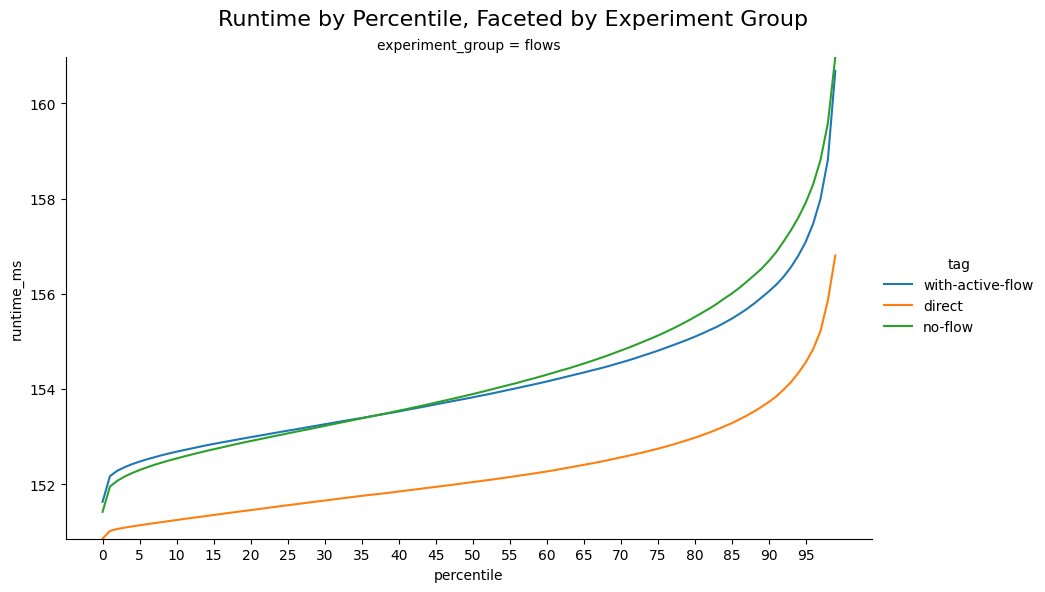Latency Footprint
Through our benchmarking sessions, we wanted to unveil Lunar's latency footprint on response time percentiles in comparison to direct API calls made without Lunar's intervention. In our experiments, we have selected a provider with a constant response time of 150ms, which is relatively fast for a web-based API.
To accomplish this, we explore the following scenarios:
- Traffic passes directly to the API provider without any intermediary. (referred to as "direct")
- Traffic passes through Lunar.dev without any flows enabled, acting as a simple proxy. (referred to as "passthrough")
- Traffic passes through Lunar.dev while employing a simple flow that doesn't short circuit requests. (referred to as "with-active-flow")
We allocated three different AWS EC2 instances of type c4a.largefor this purpose - one for the client application making API requests, one dedicated to Lunar, and another one dedicated to the API provider.
Setup
We used Apache AB, to simulate client-side behavior and gather necessary metrics. To replicate how client applications interact with Lunar, we directed Apache AB to call Lunar, which, in turn, forwarded the requests to the Provider.
On the provider side, we leveraged go-httpbin, a Docker image that serves as a Go version of httpbin.org.
Benchmark Results
In our performance analysis, we conducted three experiments to compare the following scenarios:
- Calls directly to the provider (referred to as "direct").
- Calls to the provider via Lunar.dev Proxy without any active flow (referred to as "passthrough").
- Calls to the provider via Lunar.dev Proxy with an active flow (referred to as "with-active-flow").
The visualization below presents percentile values on the X-axis and runtime in milliseconds on the Y-axis, highlighting the differences between each experiment and the baseline direct experiment, which are relatively small across percentiles.

To provide a clearer understanding, let's examine the same graph with the Y-axis representing the delta from the baseline for each experiment and percentile. In the direct experiment, the delta remains 0 for all percentiles, as it is compared against itself.

- At the 99th percentile, Lunar.dev Proxy adds around 4ms (with passthrough and with an active flow) to the overall response time of HTTP calls.